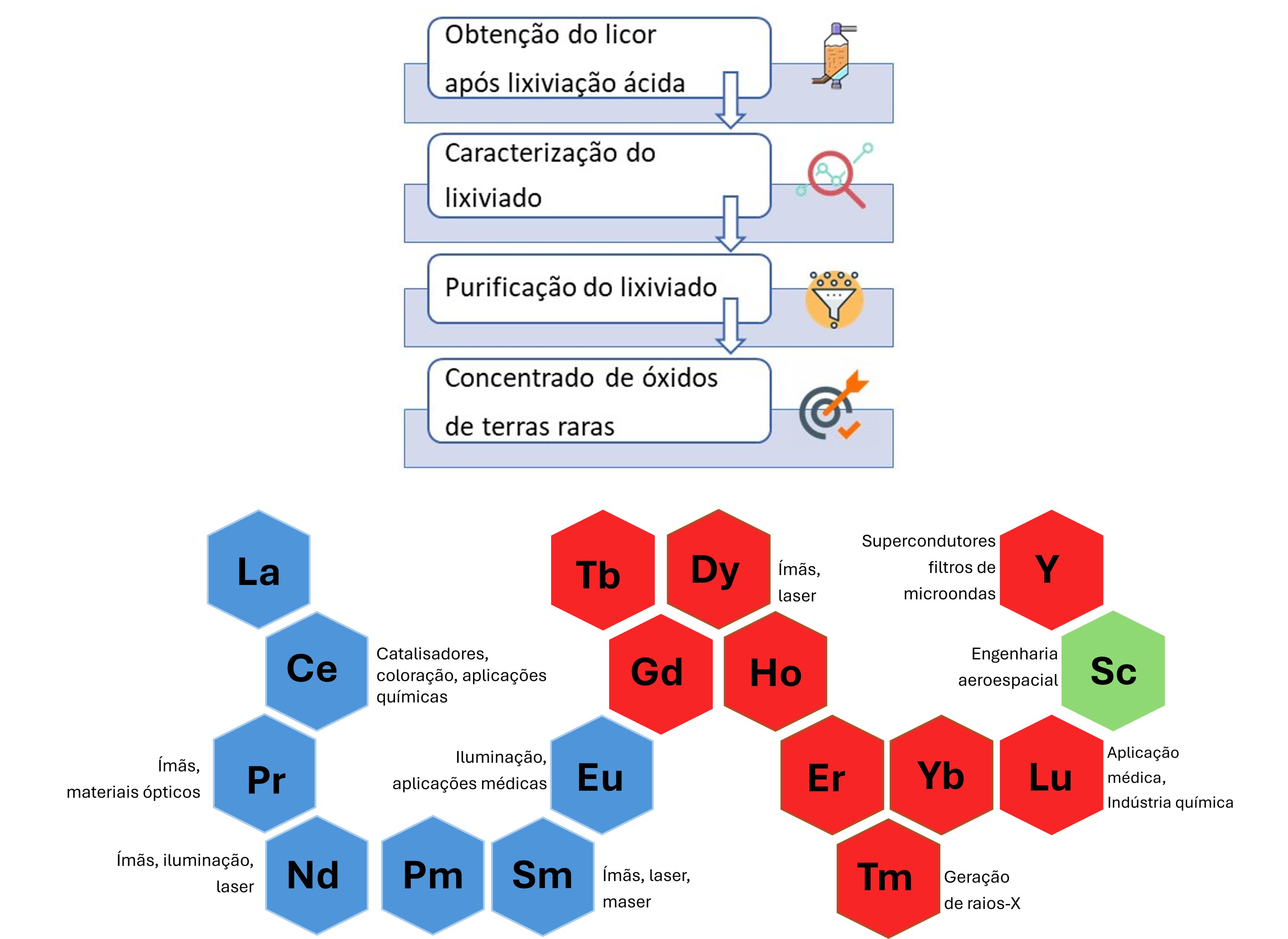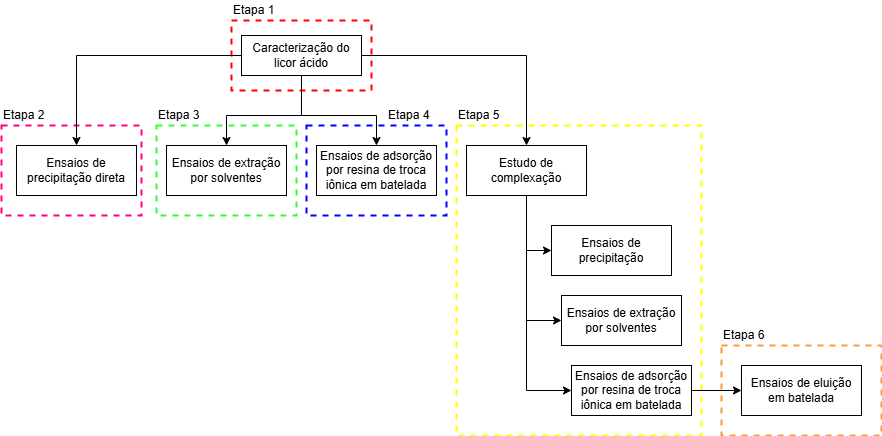RECUPERAÇÃO DE TERRAS RARAS A PARTIR DE UM LICOR DE LIXIVIAÇÃO ÁCIDA DA COLUMBITA UTILIZANDO TÉCNICAS DE PURIFICAÇÃO

Objetivos de Desenvolvimento Sustentável



Resumo
Os elementos terras raras exibem características físico-químicas únicas que justificam a diversidade de suas aplicações tecnológicas e, por conseguinte, sua crescente demanda anual. Ao mesmo tempo em que a demanda aumenta, há escassez mineralógica e risco de falta de abastecimento desses metais na indústria, destacando a necessidade de desenvolver novas rotas de obtenção e explorar fontes secundárias desses materiais. Dessa forma, o projeto busca a recuperação de elementos terras raras a partir de uma solução ácida proveniente da lixiviação da columbita. Dentre os principais desafios encontrados durante a pesquisa destacam-se a presença multielementar na solução de trabalho, a concentração de íons sulfato (SO42-) superior à concentração dos outros íons e o pH igual a menos 0,5 (- 0,5). Portanto, a combinação de técnicas de purificação, como extração por solventes, adsorção por resinas de troca iônica e precipitação seletiva foi estudada para assegurar a máxima recuperação de terras raras.
Abstratct
Rare earth elements (REEs) possess distinctive physicochemical properties that make them essential for a wide range of modern technological applications. As global demand for these materials continues to grow each year, concerns have emerged over their limited natural availability and potential supply shortages for industry. This scenario underscores the importance of developing alternative methods for extracting REEs and identifying secondary sources, such as industrial residues or byproducts. In this context, the present project focuses on recovering REEs from an acidic solution resulting from the leaching process of columbite, a mineral that contains these metals. The research faced several challenges, including the complex mixture of various metals in the solution, a high concentration of sulfate ions (SO₄²⁻) compared to other components, and an extremely low pH of -0.5, indicating a highly acidic environment. To address these issues and improve the efficiency of REE recovery, a combination of purification techniques was explored. These include solvent extraction, ion exchange using resins and selective precipitation. Together, these methods aim to maximize the recovery of REEs in a more sustainable and economically viable way.





 Imprimir
Imprimir